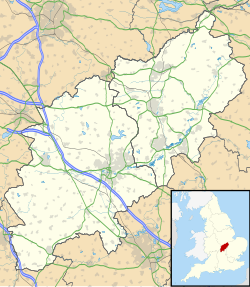| Braybrooke | |
|---|---|
 Braybrooke Lodge gate | |
Location within Northamptonshire | |
| Population | 378 (2011) |
| OS grid reference | SP7684 |
| Unitary authority | |
| Ceremonial county | |
| Region | |
| Country | England |
| Sovereign state | United Kingdom |
| Post town | MARKET HARBOROUGH |
| Postcode district | LE16 |
| Dialling code | 01858 |
| Police | Northamptonshire |
| Fire | Northamptonshire |
| Ambulance | East Midlands |
| UK Parliament | |
Braybrooke is a small village in north west Northamptonshire, England. The population of the civil parish at the 2011 census was 378. [1] It is situated about halfway between Market Harborough and Desborough. It lies in a valley between two ridges one of which is surmounted by the A6 trunk road. The surrounding land in the parish is a mixture of pasture and arable.
Contents
The villages name means 'The broad brook'. [2]

